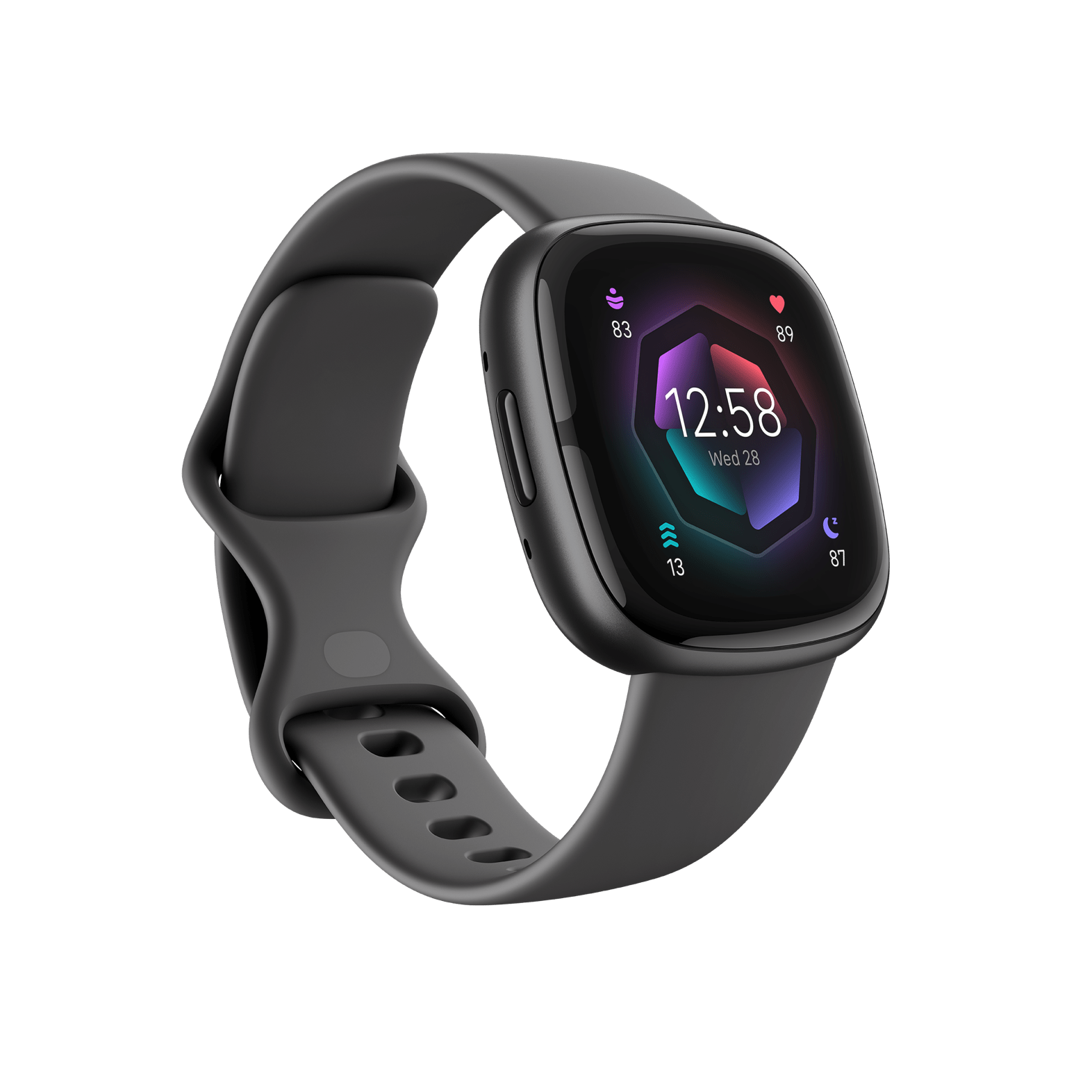Featured
Gadget of the Week: Sleep moves to centre of fitness tech
The humble step counter has evolved into a near-medical grade device in the new Fitbit Sense 2, writes ARTHUR GOLDSTUCK
Share
- Click to share on Twitter (Opens in new window)
- Click to share on Facebook (Opens in new window)
- Click to share on LinkedIn (Opens in new window)
- Click to email a link to a friend (Opens in new window)
- Click to share on Reddit (Opens in new window)
- Click to share on WhatsApp (Opens in new window)
- Click to share on Pinterest (Opens in new window)
What is it?
On the surface, the Fitbit Sense 2 looks exactly like the original Sense, aside from a physical side button that sticks out rather than being indented, and a 10% reduction in thickness. That does make for a more user-friendly device, but it is only a symbol of the evolution of the combination smartwatch and fitness tracker.
The first Sense introduced Electrodermal Activity (EDA) as a health metric: it measures the conduction of electrical pulses in the skin to reveal levels of stress, based on the idea that skin conduction is caused by changes in the sweat glands, which are an indication of stress.
The Sense 2 takes it a step further with a Body Response sensor called cEDA (“c” for “continuous”), that continually monitors stress levels through the day and alerts the user to do something about it when the numbers go through the roof.
This is part of the magic of a redesigned biosensor hub on the back of the watch: two electrodes with better skin contact than before emit a low level electrical current, and the feedback is turned into measurements. Significantly, the feature has little impact on battery life.
In combination with resting heart rate and heart rate variability (HRV) – the variation in the time interval between heartbeats – the Sense produces a Momentary Stress Detection Algorithm, designed to detect moments of potential stress throughout the day.
That is useful for alerting users to their stress levels as well as building up a history that allows one to discern patterns on one’s stress levels. It goes another step further by offering stress intervention: on-wrist and in-app ways to help users manage stress in the moment. At a time when mental health is moving to the centre of overall health awareness, the feature could not be better timed.
Along with stress tracking, the Sense 2 tracks heart health with sensors that detect signs of atrial fibrillation through an ECG app, and combine that with heart rate variability and skin temperature to give a big picture of heart health.
It is in another area that the device excels, however. Most of us are only too well aware of when we are stressed, and what stresses us out. But mystery still surrounds our sleep patterns, and the behaviours that improve or harm sleep.
The Sense is probably the leading wearable sleep monitoring tool right now, in combination with extensive features to analyse sleep patterns via the Fitbit Premium service. Here, unfortunately, Fitbit has kept the best features for paying subscribers, as if the watch is not already expensive enough. But it does come with 6-months free access to Fitbit Premium, which should be enough time to decide whether the commercial services are worth the cost.
What does it cost?
Recommended retail price: R7,499 including VAT. The other devices in the new Fitbit range are the Inspire 3, at R2499, and the Versa 4, at R5,699.
Why does it matter?
Speaking as a sleep-impaired individual, the insights gained from advanced sleep tracking have proved invaluable. Not so much in repairing my sleep, but in understanding the factors that impair it. That kind of insight is the first step to addressing an issue, and harks back to my original Fitbit epiphanies: about eight years ago, tracking my steps on the Fitbit Flex became the route to resorting to fitness. A couple of years later, The Charge HR started me on the journey to bringing down my resting heart rate. That, in turn, was almost entirely due to combining fitness activity with creating better sleep patterns.
Not all such responses become ingrained habits, though, and the holistic approach taken by the Sense 2 is partly aimed at addressing the difficulty we all have with sticking to health and fitness resolutions. The bottom line is that it leaves no place to hide from the impact of one’s own lifestyle.
What are the biggest negatives?
- The full benefit of sleep tracking is only available if one pays an extra subscription fee for a Premium account.
- Daily Readiness for workouts tends to tell one the obvious, and ignores the fact that most workouts are part of a routine.
- Promises six days of battery life, as they say in the small print classics, results may vary.
What are the biggest positives?
- Offers superb tools for the serious fitness enthusiast to help get the most out of a workout.
- Most holistic view yet of fitness and wellness, through combining exercise, sleep and stress metrics. The first device that actively assists in managing stress.
- Provides “actionable” insights, i.e. guides users in their response to health measures.
* Arthur Goldstuck is founder of World Wide Worx and editor-in-chief of Gadget.co.za. Follow him on Twitter on @art2gee
Share
- Click to share on Twitter (Opens in new window)
- Click to share on Facebook (Opens in new window)
- Click to share on LinkedIn (Opens in new window)
- Click to email a link to a friend (Opens in new window)
- Click to share on Reddit (Opens in new window)
- Click to share on WhatsApp (Opens in new window)
- Click to share on Pinterest (Opens in new window)
| Thank you for Signing Up |

















